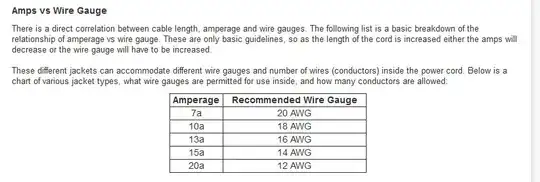When getting power cables for servers, there are various AWG (American Wire Gauge) choices to make. The ones I have noticed are 18 and 14; 14 is thicker so will be a little more stiff. But, I am also wondering how I determine if I really need the heavy duty or thicker 14 AWG cables, or if 18 would be fine?
In my particular case, this is for 6 foot runs from a power strip to servers. The power will be run at 208v single phase. Using this online calculator, it looks like maybe at most .1 volts would be dropped which sounds negligible (assuming copper).
Are there other concerns here? For instance:
- Maximum rating
- Bundled temperature (I have vertical PDUs, so doesn't apply to me, but still is this a concern?)
How do I know which AWG I actually need for my server's power cables?

